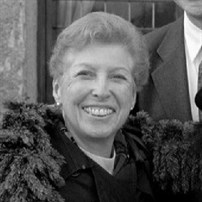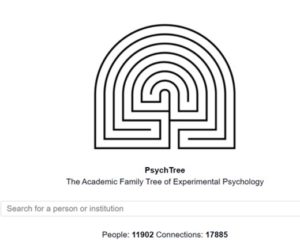A tribute to Dr. Beth Sulzer-Azaroff and other impactful mentors
Have you learned from someone who you have never met? Perhaps you read a book that resonated so much with you, that, in a way, it was like you met the author without actually meeting them?
Perhaps the author of the book you read is no longer alive, or you have not crossed paths with the author.
Recognizing the influences of mentors that you know and those you don’t, is like drawing your professional genealogy, which involves reflecting beyond your direct supervisors, advisors, mentors, and/or teachers. Drawing this genealogy invokes thoughts and research about your close and extended roots. I will focus on the importance of considering these influences on mentoring in behavior analysis.
Although having a mentor with whom you meet often is invaluable, it is important to recognize the role of individuals who influence your life (yes, that means outside of behavior analysis too!), even when you have not met them. You may wonder, why is this important? I say because it is part of our histories, and we know that our histories of reinforcement affect our current behavior. It is also important because, in the process of reflection and recognition of influences, you may discover that your professional background is richer than you thought it was. You may also start questioning your framework and seek other influences. Another reason why I think this is important is that you may also end up learning more about the field of behavior analysis and interrelated fields.
Dr. Beth Sulzer-Azaroff: An Impactful Leader in Behavior Analysis
The more I read and talk to colleagues, the more I learn about the richness and complexity of our field and the influences that I receive. I want to tell you about a mentor and teacher that, although I did not meet, has had a special impact on me. I want to tell you about Beth Sulzer-Azaroff (1929-2022). Some years ago, I met her indirectly through one of my graduate school professors, Philip Chase, one of her students at University of Massachusetts Amherst. He spoke with such high respect and admiration about her, I started feeling as if I was starting to know her and her work. There is a biography of Dr. Sulzer-Azaroff on Wikipedia available by clicking in this link: https://en.wikipedia.org/wiki/Beth_Sulzer-Azaroff and ABAI also offers her bio by clicking this following link https://www.abainternational.org/constituents/bios/bethsulzerazaroff.aspx

Dr. Sulzer-Azaroff was the first woman to become president of the Association for Behavior Analysis (today ABAI) from 1981 to 1982. She also the founded the Berkshire Association for Behavior Analysis and Therapy (BABAT) in 1979. She is known for her legacy in teaching, mentoring, research, and community engagement. To honor such legacy, BABAT has created the Beth Sulzer-Azaroff Award for Distinguished Teaching. You may read more about this award by clicking here: https://babat.org/page/awards
I was honored with the Beth Sulzer-Azaroff Distinguished Teaching Award at BABAT’s 40th annual conference this year. Receiving this award reaffirms my commitment to teaching, learning, and mentoring, and also sets the occassion to Iearn more about Dr. Sulzer-Azaroff’s work and to continue to examine my influences. I want to share a few aspects of Dr. Sulzer-Azaroff’s career that can serve as inspiration to continue a legacy of excellence in teaching, research, and service. To do that, I will focus on her mentoring style.
Dr. Mark Alavosius, one Dr. Sulzer-Azaroff’s doctoral students, described her work as pioneer of behavior analytic approaches to occupational safety. Specifically, Alavosius (2022) wrote:
Her mentorship shaped a number of behavior scientists who flourish in their careers along quite different paths. I don’t recall Beth ever handing a study to a graduate student to do as a thesis or dissertation. She had us list our interests, reviewed the viability of research questions, and guided selection of projects. Her training program was an incubator and our lab was the community (p. 275).
In an interview with Dr. Sulzer-Azaroff published in The Behavior Analyst, today called Perspectives on Behavior Science, titled “Joy and Fullfillmet as a Female Behavior Analyst” (2015) she said:
“Without a doubt, teaching and mentoring were my most rewarding activities” (p. 278).
In this interview, Dr. Sulzer-Azaroff was asked for advice, and one thing that stood out to me was:
“Probably the one saving grace was my willingness (not eagerness) to say ‘no’ when I felt my professional and personal resources were being stretched too thin” (p. 281).
Mentoring in Behavior Analysis
Fortunately, the topic of mentoring (or mentorship) in behavior analysis is gaining more visibility and formal examination. For example, Rios et al. (2023) recently published an article in the journal Behavior and Social Issues titled “Survey of Faculty Perspectives, Actions, and Barriers to Culturally Responsive Mentorship.”
This article formalizes and expands on much needed mentorship frameworks and practices. The authors described various benefits of effectively implementing culturally responsive mentorship (CRM) with students from historically marginalized groups. Among some benefits of implementing CRM are building opportunities for social networking and leadership skills for students.
One of the benefits of using CRM described by Rios et al. that made me reflect the most was that mentors can contribute to preserve their students’ cultural identity. This article made think about how does a mentor do that? I think, as I read and reflected on this article, that by thinking about mentoring as a reciprocal process and taking an asset-based approach, the mentor learns from the mentee as much (or more) as the mentee learns from the mentor. This mentoring framework made me think about the approach of my advisor (teacher and mentor) in graduate school Dr. Andy Lattal. His genuine interest in learning about my cultural background and native language were very evident from the start. For a bit of background, I am an immigrant from Caracas, Venezuela, and English is my second language. Not only Dr. Lattal asked me questions and showed interest in my background, but he also was actively invested in learning about all of his students’ identities and cultural background. With his genuine respect, admiration, and interest, he sees this part of his students’ repertoires as an asset and as a continuation of his learning journey. Dr. Lattal’s lab is known for thriving with ethnic and cultural diversity gathering students from a variety of backgrounds. During my time as a graduate student, I recall working with students from Brazil, France, Mexico, Japan, United States, and Venezuela. Dr. Lattal has developed educational and research programs of behavior analysis abroad.
I can see how adopting CRM erodes a hierarchical and vertical approach to mentoring and levels the relationship between individuals who are learning from each other, where the cultural identity of the students is respected, fostered, and promotes opportunities for reciprocal learning. Dr. Lattal and I continue to collaborate. In a recent meeting I introduced myself and mentioned that he was my advisor in graduate school. Dr. Lattal was also in that meeting and he followed my introduction with something along the lines of how, as a student, I also advised him. To me, this is one of many examples of how his style of mentoring leveled the relationship; where we learn from each other. Reaffirming students’ identities contributes to their retention in academic and programs and the field (Rios et al., 2023). Thus, an approach like CRM can foster a more diverse group of professionals in the field and address issues of social relevance.

Asset-Based Learning, Teaching, and Mentoring
As I learn more about mentoring frameworks such as CRM, I want to tell you more about asset-based framework for teaching, learning, and mentoring. An asset-based framework is usually compared to a deficit-based or need-based framework. A need or deficit-based framework focuses on what is missing following some external standard (one that is not within the community of interest) (Mein, 2018). Following Mein’s work, an asset-based framework with culturally and linguistically diverse students focuses on: being proactive, existing capacity and resources, values comunity members as contributors and experts. Although this author includes teaching and learning within this framework, I’m inclined to include mentoring, as it is an essential part of teaching.
What is mentoring?
Mentoring is a cultural practice that involves building community and that is aimed at creating meaningful teaching and learning experiences (Peterson et al., 2023). According to these authors, mentoring is one of the most important tasks of behavior analysts, as entails shaping the future of the field. While describing their own mentoring experiences, Peterson et al. described mentoring as messy, ongoing, challenging, easy, joyful, and omnidirectional.
According to LeBlanc et al. (2020) a “mentor is someone who is a positive guiding influence in another person’s life” (p. 6). To better understand and implement mentoring and particularly in developing positive mentoring experiences for Black, Indigenous, and People of Color (BIPOC) students, Ward and Robinson-Wood (2022) elaborate the concept of reciprocal development and present a model that includes instrumental, psychosocial, and political elements into the professional mentoring relationships. In the preface for their book titled “Sister Resisters, Mentoring Black Women on Campus“, Warde and Robinson-Wood stated:
In these pages, we explore the many ways in which biased attitudes and discriminatory behaviors surface in the daily lives of Black women in college. We identify circumstances that call for resistance responses, and we analyze what the could or should look like and why. Finally, we center this work in our model of cross-racial mentoring in higher education, a practice that calls for a very intentional focus on developing resistance skills in both Black metees and the adult mentors (who are often White women) working with them (pp. xi-xii).
In their preface, Warde and Robinson-Wood also detailed their use of language. Specifically, the authors elaborate on their language choices that relate to race and gender, recognizing and respecting the sense of history of identity and history that various terms (e.g., White, Black) carry. The authors also elaborate on their use and meaning to the use of the term resistance. Attention to terms and overall, to the use of language is an interest shared also by many behavior analysts. Although is not my goal to summarize this book in this blog, I do want to encurage you to consider it as you examine mentoring frameworks while working with students and professionals in behavior analysis. Learning from other fields and identifying compatibilities with behavior analysis is an enriching learning experience.
Mentoring is inextricably linked to teaching. A good mentor frequently engages in self-reflection and also seeks mentoring. Self-reflection can be practiced by asking questions about one’s own repertoire (e.g., how did I learn to become a mentor? Who influences me? How do I use certain terms?) that may contribute to becoming more aware of one’s influences. Practicing humility also propels seeking more learning and professional development opportunities that are part of becoming a good mentor. Examining your geneology involves self-reflection and learning more about behavior analysis and other fields and overall, about your life.
Examining your Genealogy in Behavior Analysis
On the interview mentioned earlier, Dr. Sulzer-Azaroff reflected on who influenced her on pursuing behavior analysis. She mentioned how in the mid-1950s her husband, Edward Sulzer, was pursuing a doctoral degree at Columbia University, and so she learned about Fred Keller’s course on behavior analysis. Then, she described how she completed a doctoral degree at University of Minnesota under the tutelage of Dr. Robert Orlando, who had studied under Sidney Bijou. This is an example of a genealogy with direct and indirect influences. Given what Dr. Sulzer-Azaroff described, one could trace a direct line from Bijou to Orlando to Sulzer-Azaroff, and an indirect line from Keller. Sulzer-Azaroff (1981) published an article in The Behavior Analyst titled “Behavior Modification and Human Rights: A Legacy of Edward Stanton Sulzer 1930-1970” were she elaborated on the legacy and influence of the work of her husband, Edward Sulzer. In this article, Sulzer-Azaroff stated:
In observance of the 10th anniversary of the death of Edward Stanton Sulzer, these reminiscences are
presented. They describe how an individual psychologist could affect the professional and personal lives of
many. Edward Sulzer is described in terms of the environment that shaped his values, how they affected the
actions of his students and clients, and how they are reflected in current social policy. The account leads to a
conclusion that the actions of single individuals may influence the course of human events (p. 9).
As I reflect on the last sentence of the quote above, I think about the influence and power that a mentor holds. That one individual could have such an influence over another(s). As mentors, we hold the responsibility of arranging for such influence to be positive, constructive, and long-lasting. Unfortunately, not all experiences with mentors and teachers are positive. These negative experiences may also come up as you reflect on your influences in behavior analysis. Dr. Andy Lattal (2005) wrote about his reflections and perspectives on teaching and mentoring, identifying positive and negative influences in his carreer. These negative experiences are valuable in teaching us who we do not want to be as a teacher and a mentor (Lattal, 2005). These reflections and others are published by the The Society for the Teaching of Psychology’s
The Teaching Psychology in Autobiography: Perspectives from Exemplary Psychology Teachers, published by the Society for the Teaching of Psychology represent the development and reflections of some of psychology’s very best teachers who provide insightful anecdotes and lessons learned for anyone seeking to improve his or her teaching (https://teachpsych.org/ebooks/tia.php).
Reflecting about your influences in behavior analysis (e.g., who are your mentors, and who are your mentors’ influences) is an important introspective exercise. In doing this, I notice a predominantly White male lineage of mentors is common in for many behavior-analysts. But things are changing. A more diverse group of role model mentors, researchers and teachers of behavior analysis is emerging. Dr. Sulzer-Azaroff, among a few other women, set the stage for more women in the field. The interview mentioned above is part of a collection of interviews to seven prominent women in behavior analysis: Judy Favell, Linda LeBlanc, Frances McSweeney, Anna Pétursdóttir, Carol Pilgrim, Beth Sulzer-Azaroff, and Bridget Taylor (see Nosik & Grow, 2015).

A more diverse group of teachers and mentors in behavior analysis is needed to diversify and grow the field. While you do this reflection exercise on your genealogy, it is important to consider the cultural context of your teachers and mentors in behavior analysis. One tool that can help track you track your academic genealogy is the Website PsycTree, available by clicking here: https://academictree.org/psych/. Also, LeBlanc et al. (2020) described the concept of the Mentor Tree which facilitates a reflection to build your genealogy. Following LeBlanc et al., the Mentor Tree is composed of the the roots, which are critical formative mentors, the trunk represents those who influence your professional repertoires, and the branches are continuing influences after a given training has been completed (see pp. 29-41 for more details on to build your Mentor Tree). Building your behavior analytic genealogy is both an exercise for teaching history of behavior analysis and examining professional identity in the field. Recognizing influences not only will inform who you are in the filed, but also provide an opportunity to question influences and advance as a behavior analyst.
References
Alavosius, M. P. (2022). Remembering Beth Sulzer-Azaroff. Journal of Organizational Behavior Management, 42(3), 274-280. https://doi.org/10.1080/01608061.2022.2070574
Lattal, K. A. (2005). Learning and teaching. In T. A. Benson, C. Burke, A. Amstadter, R. Siney, V. Hevern, B. Beins, & W. Buskist, (Eds.), Teaching psychology in autobiography: Perspectives from exemplary psychology teachers (pp. 179-185). Society for the Teaching of Psychology. retrieved from https://teachpsych.org/ebooks/tia.php
LeBlanc, L. A., Sellers, T. P, & Ala’i, S. (2020). Building and sustaining meaningful and effective relationships as a supervisor and mentor. Sloan Publishing.
Mein, E. L. (2018). Asset-based teaching and learning with diverse learners in postsecondary settings.th Diverse Learners in Postsecondary Settings”. Departmental Technical Reports (CS). 1271. https://scholarworks.utep.edu/cs_techrep/1271
Nosik, M. R., & Grow, L. L. (2015). Prominent women in behavior analysis: An Introduction. The Behavior Analyst, 38(2), 225–227. https://doi.org/10.1007/s40614-015-0032-7
Peterson, S. M., Anderson, C. M., & Wolgemuth, J. R. (2023). Mentoring, mothering, sistering, and friending. Building a caring mentoring community . In R. A. Rehfeldt, T. M. Cihon & E. B. Rasmussen (Eds.), Women in Behavior Science Observations on Life Inside and Outside the Academy (Chapter 6). Routledge. https://doi.org/10.4324/9781003216773
Rios, D., Bell, M. C., & Fahmie, T. A. (2023). Survey of faculty perspectives, actions, and barriers to culturally responsive mentorship. Behavior and Social Issues, 1-28. https://doi.org/10.1007/s42822-023-00144-3
Sulzer-Azaroff, B. (1981). Behavior modification and human rights: A legacy of Edward Stanton Sulzer 1930-1970. The Behavior Analyst, 4(1), 9–17. https://doi.org/10.1007/BF03391848
Sulzer-Azaroff, B. (2015). Joy and fulfillment as a female behavior analyst. The Behavior Analyst, 38(2), 275–282. https://doi.org/10.1007/s40614-015-0038-1
Ward, J. V. & Robinson-Wood, T. L. (2022). Sister resisters. Mentoring Black women on campus. Harvard Education Press.
